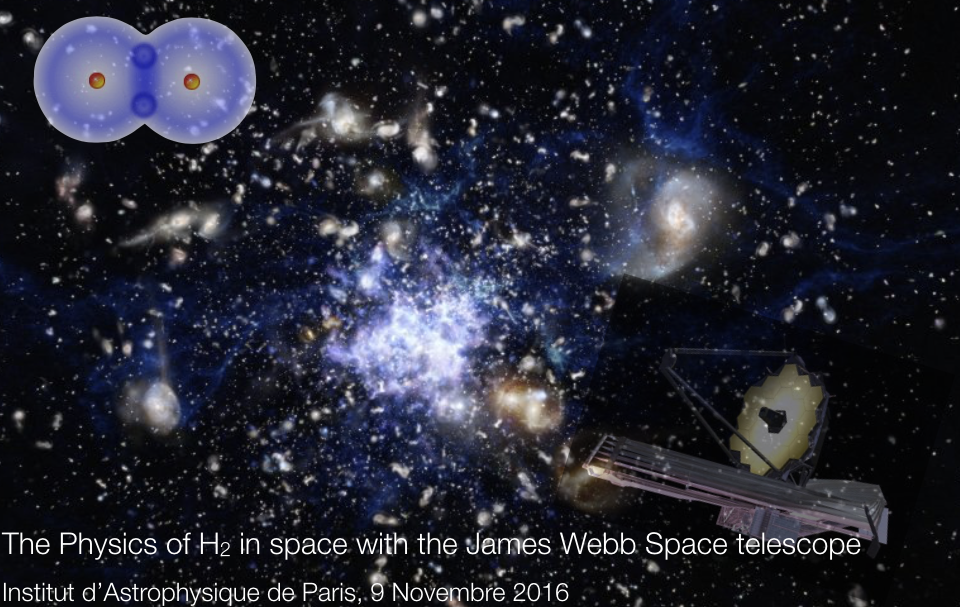
Molecular Hydrogen Physics in Space with JWST
IAP, Paris, Salle des séminaires, 9th November 2016
Organisateurs
- François Boulanger
- Pierre Guillard
- Edith Falgarone
The physics and chemistry of molecular gas are key to three fundamental questions in astrophysics: the formation of galaxies, stars and planets. Progress in these areas depends critically on our ability to observe the molecular gas in galaxies, especially H2. H2 initiates complex interstellar chemistry by bounding with heavier elements. H2 is a tracer of the low-metallicity molecular material in teh outskirts of galaxies, but also a tracer of the energetic processes that shape the structure of the interstellar matter, from galactic scales to the scales of turbulent dissipation. In that sense, H2 is very complementary to CO.
The James Webb Space Telescope (JWST), to be launched in 2018, will allow us to observe the rotation-vibration lines of H2 with a sensitivity and a spatial resolution 100 times greater than Spitzer and VLT/SINFONI/KMOS. This meeting aims at presenting current work on H2 physics and chemistry in space, and stimulate new work, lab experiments, models and observations, to prepare observing projects in the very competitive perspective of the JWST observing calls (April 2017 for the Early Release Science and October 2017 for the GO).
UMR7095 - Institut d'Astrophysique de Paris - 98 bis boulevard Arago - 75014 Paris